
Whether you're buying or burning, knowing a few things about the different types of firewood can maximize efficiency and save you trouble when it comes to your wood stove, fireplace, or fire pit.
Not all firewood gives the same results so understanding the characteristics of different types is key to choosing the best firewood for your needs.
Firewood has two categories: hardwood and softwood, but don't let the names fool you! Hardwoods aren't always harder or more durable and softwoods aren't soft and workable-give or take a few exceptions.
Actually, the difference lies in their terms of reproduction and physical structure, not by their end use or appearance.The short version of the story goes like this, hardwoods are generally denser than softwood meaning they burn for longer and produce more heat. They are also less sticky than softwoods and are less likely to cause tar deposit buildups in your flue.
To get a better idea of the benefits and features of both hardwoods and softwoods we're going to break down each category with more details.
So let's take a look at which is the best firewood for different types of fireplaces.
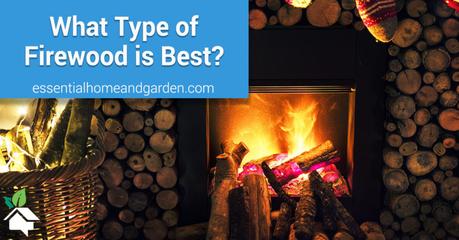
Helpful Firewood Lingo
To ensure you aren't lost when shopping around for firewood there are three important terms to recognize:
- Cord: Unit of measurement, when purchasing firewood you purchase it by the cord, a cord is 8′ long x 4′ high x 4′ deep.
- Seasoned: Dry wood.
- Green: Unseasoned wood that is still full of moisture.
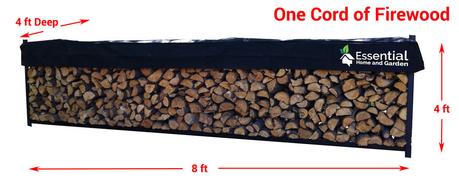
Best Types of Firewood
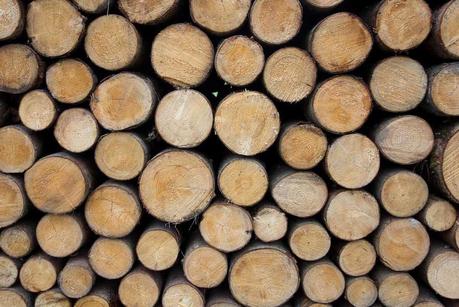
Most hardwood trees are slow growing, making them much denser than softwoods, they're darker in color, burn more slowly and are best for cooking and producing fires which are hotter and more intense.
What they're great for: Long, lingering fires with lots of coals, heating your house and fueling your stove. Hardwood is generally the best wood for your fireplace.
Popular Types of Hardwood For Burning: The list of different types of hardwood could go on and on forever, so we will focus on just three of the most popular.
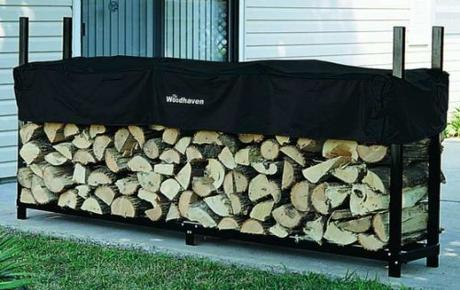
The Woodhaven 8 Foot Firewood Log Rack with Cover
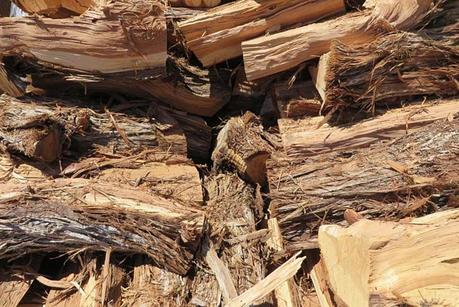
Softwoods typically season much more quickly than hardwoods and are lighter and lower in density. They ignite faster than hardwoods and emit more smoke, making them better for outside use.
What they're great for: Perfect for kindling, campfires, or anything outdoors.
Popular Types of Softwood for Burning: When it comes to softwood the options may not be as plentiful as hardwoods, but there are some great choices. Especially if you're looking for a wood with a lower heat output.
Types of Firewood To Avoid
A common misconception is that you can burn any old thing, but that's not the case. Whether you're preparing to use a campfire, a cast-iron stove, or even a stone hearth there are a few woods you should never burn.
- Non-local wood: If you find wood that has been cut and stored more than a few miles away, ditch it. Using firewood that has traveled too far is the number one way to introduce invasive insects or diseases to a new environment. Even one infected log can put an entire forest at risk.
- Green wood: Freshly cut wood has a high sap and moisture content and can be hard to light. Once it gets burning it will smoke horribly and burn inefficiently. Ask your seller when the wood was cut if you're unsure if it's green.
- Treated or painted wood: Older treated woods were often preserved with arsenic, when you burn this wood you are releasing arsenic into the air. This simple test can help you avoid burning inorganic arsenic. Additionally, painted woods release chemicals when burnt.
- Driftwood: Due to its salt content the chlorine can transform into carcinogens, which you don't want to expose yourself to. Although the salt may produce pretty flames it's best to keep this out of your fire.
- Big wood: Logs more than 5 inches in diameter must be recut before using. Throwing large logs onto a fire is a waste of time, be sure to split your logs for maximum efficiency. A great tool to help you get the job done is a
Identifying what you need from your fire and the available species in your area are essential steps for choosing the best firewood for you. The next time you are shopping around keep this guide in mind!
Learn More
Check out these posts to learn more:
